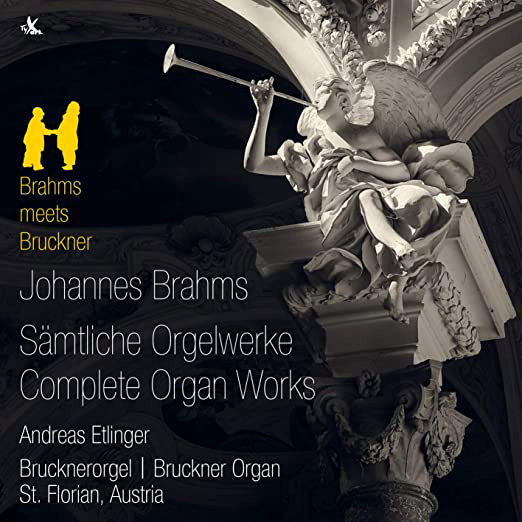
ESSENTIAL RECORDINGS

Choralvorspiel und Fuge über O Traurigkeit, o Herzeleid (2. Fassung, 1882) WoO 7 Prelude and Fugue in A minor (1856) WoO 9 Elf Choralvorspiele (1896) Op. posth. 122 - Mein Jesu, der du mich - Schmücke dich, o liebe Seele - O Gott, du frommer Gott - Es ist ein Ros' entsprungen - Herzlich tut mich erfreuen - Herzliebster Jesu - O wie selig seid ihr doch, ihr Frommen - Herzlich tut mich verlangen I - Herzlich tut mich verlangen II - O Welt, ich muss dich lassen I - O Welt, ich muss dich lassen II Prelude and Fugue in G minor (1857) WoO 10 Fugue in A flat minor (2. Fassung, 1864) WoO 8 Bonus Track - Anton Bruckner: Prelude in C major (1884) WAB 129
One thing that is instantly noticeable about the Organ Music of Johannes Brahms (1833-1897) is its strict adherence to the laws and principles established by Johann Sebastian Bach more than 150 years earlier. There's nothing typically Brahmsian about them except maybe their predilection for minor keys. As a matter of fact, if you had never heard these and were sitting in a church, and could hear this music coming from the organ loft, you would never even consider Brahms as a possible composer. It's as if he never intended publication of these pieces, but rather composed them strictly to enhance his personal studies and understanding of solid counterpoint. Sure, some like the Prelude and Fugue in G minor from 1857 display the subtle influence of Wagner, but even some of his final compositions like the Choral Preludes written 40 years later, are perfect examples of pure and theoretical counterpoint, rather than chromatic harmonic development. Far removed from the work being done by some of his contemporaries like Rheinberger, Franck or Widor. Nonetheless it is music of great beauty that, if heard from a church pew, would inspire spirituality rather than lead to distraction.
Organist and teacher Andreas Etlinger, who has been at St. Florian since 2007 where this recording was produced, plays these pieces as if both Brahms and Bach were watching over his shoulders. Afer all he explains in the booklet notes that he has been living with these works for over 25 years. Although certainly not technically challenging, they require a deep understanding of their motivation and inspiration, in order for their essence to shine through. Anton Bruckner was himself an organist in St. Florian, hence the addition of one of his pieces as a bonus track. The instrument itself is known as the Bruckner Organ.
The Bruckner Organ in the basilica of the St. Florian Monastery of Canons Regular of Saint Augustine is by no means a modest instrument. It once held the fame of being the largest in the entire kingdom until 1886. Over the years it has undergone extensive renovations and makeovers, the last of which as recently as 1996. This Baroque styled organ now boasts 103 stops ranging from a 1' Sifflote to a 32' Bourdon, and over 7386 pipes. Fortunately, Andreas Etlinger knows precisely how to navigate through this large sound arsenal at his disposal, and pick and choose optimal stop combinations for each and every piece.
Jean-Yves Duperron - April 2020